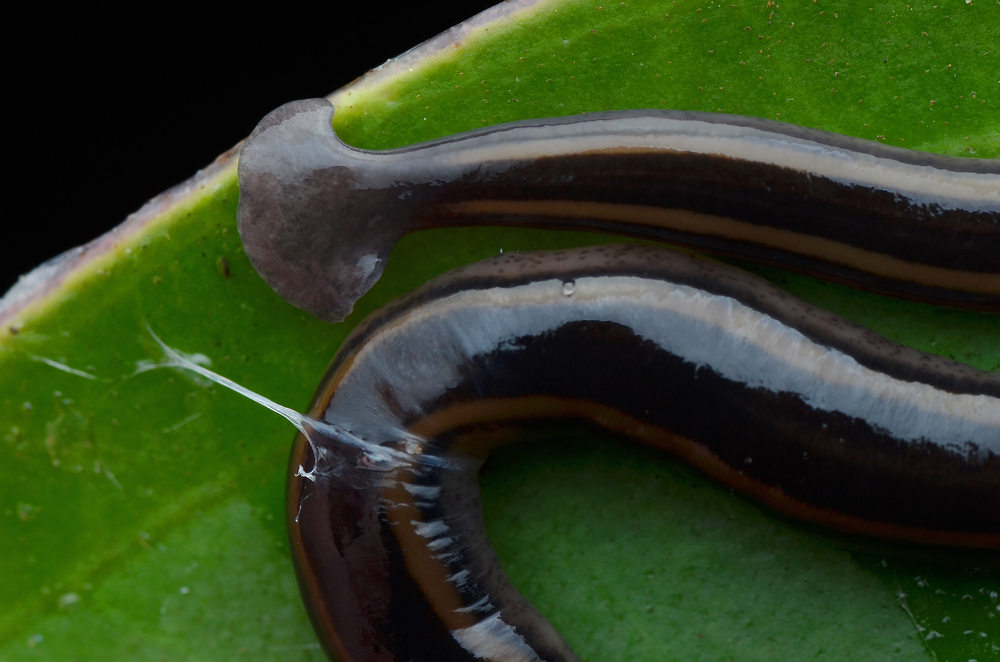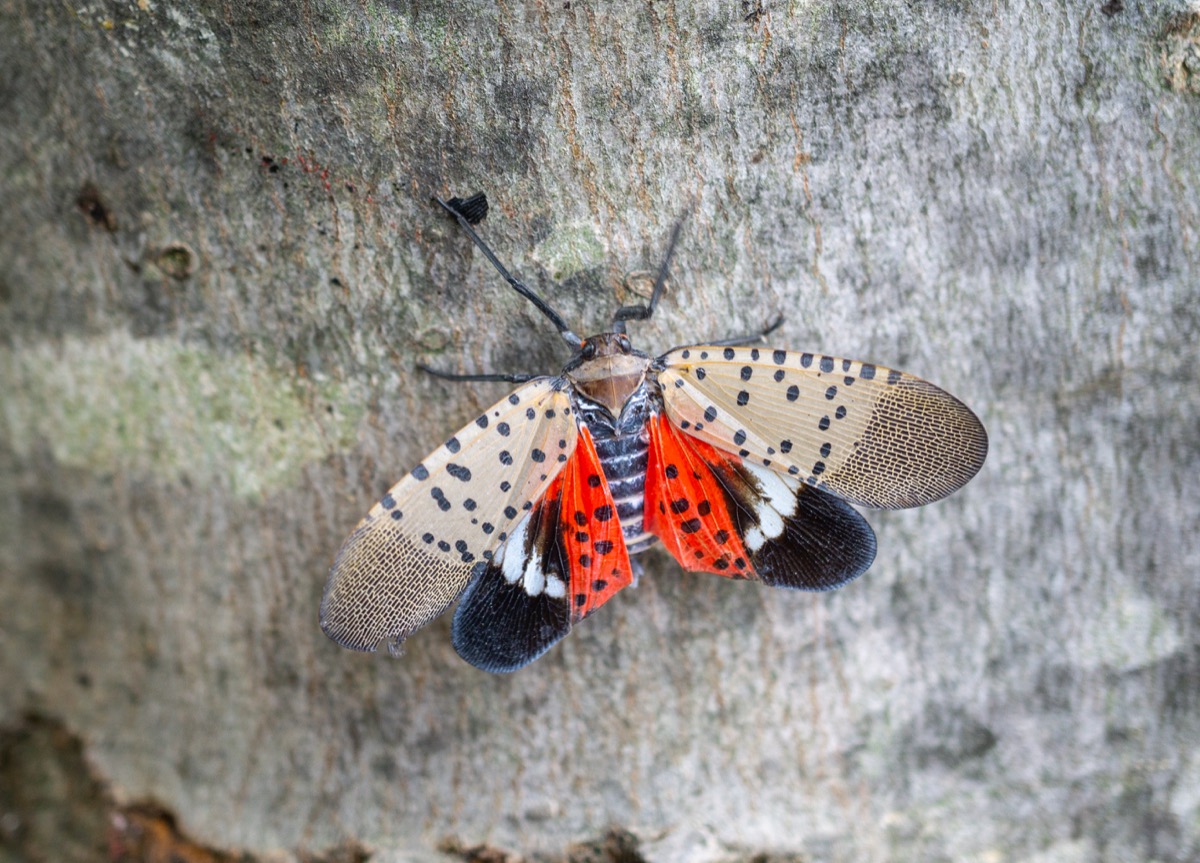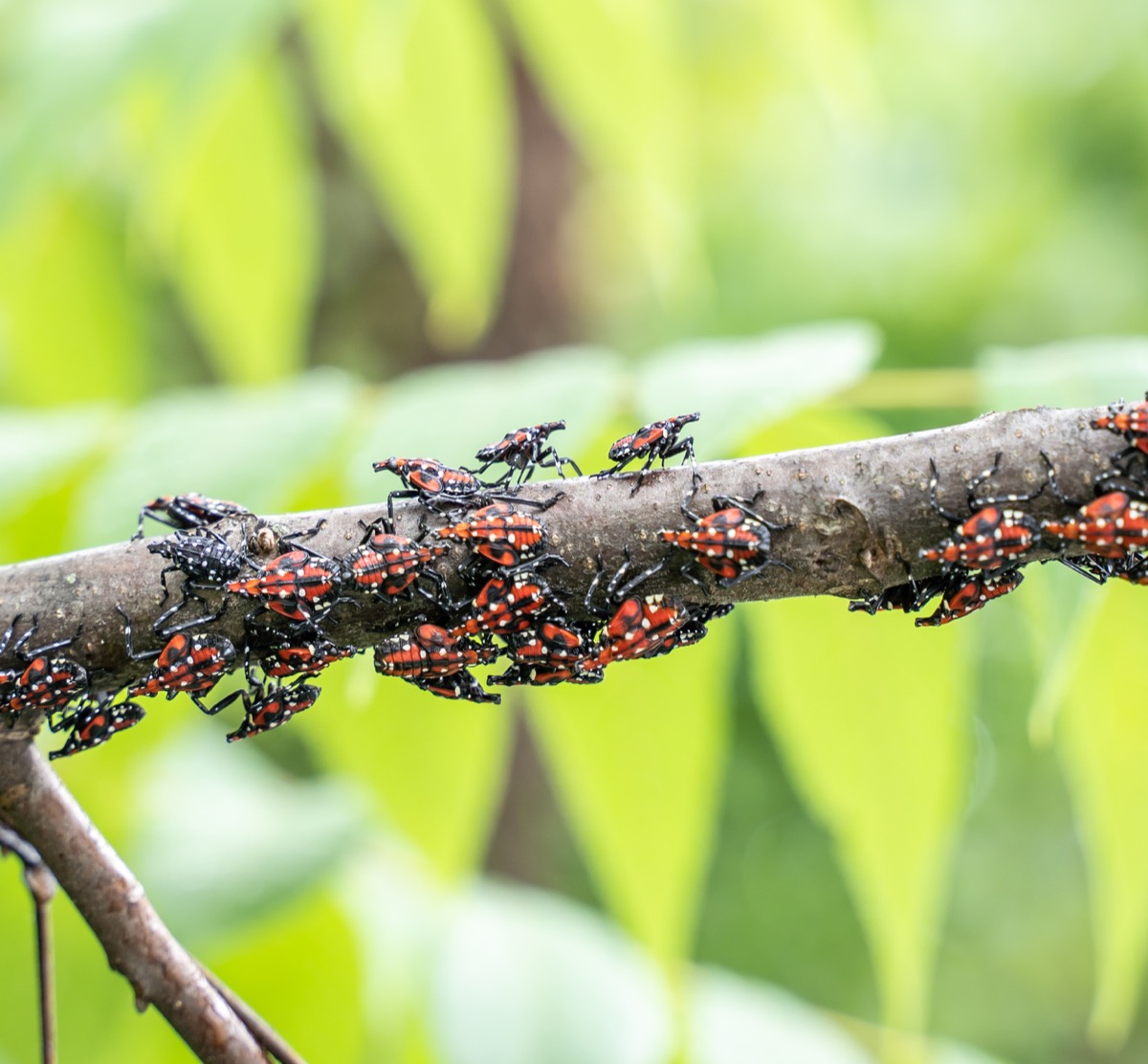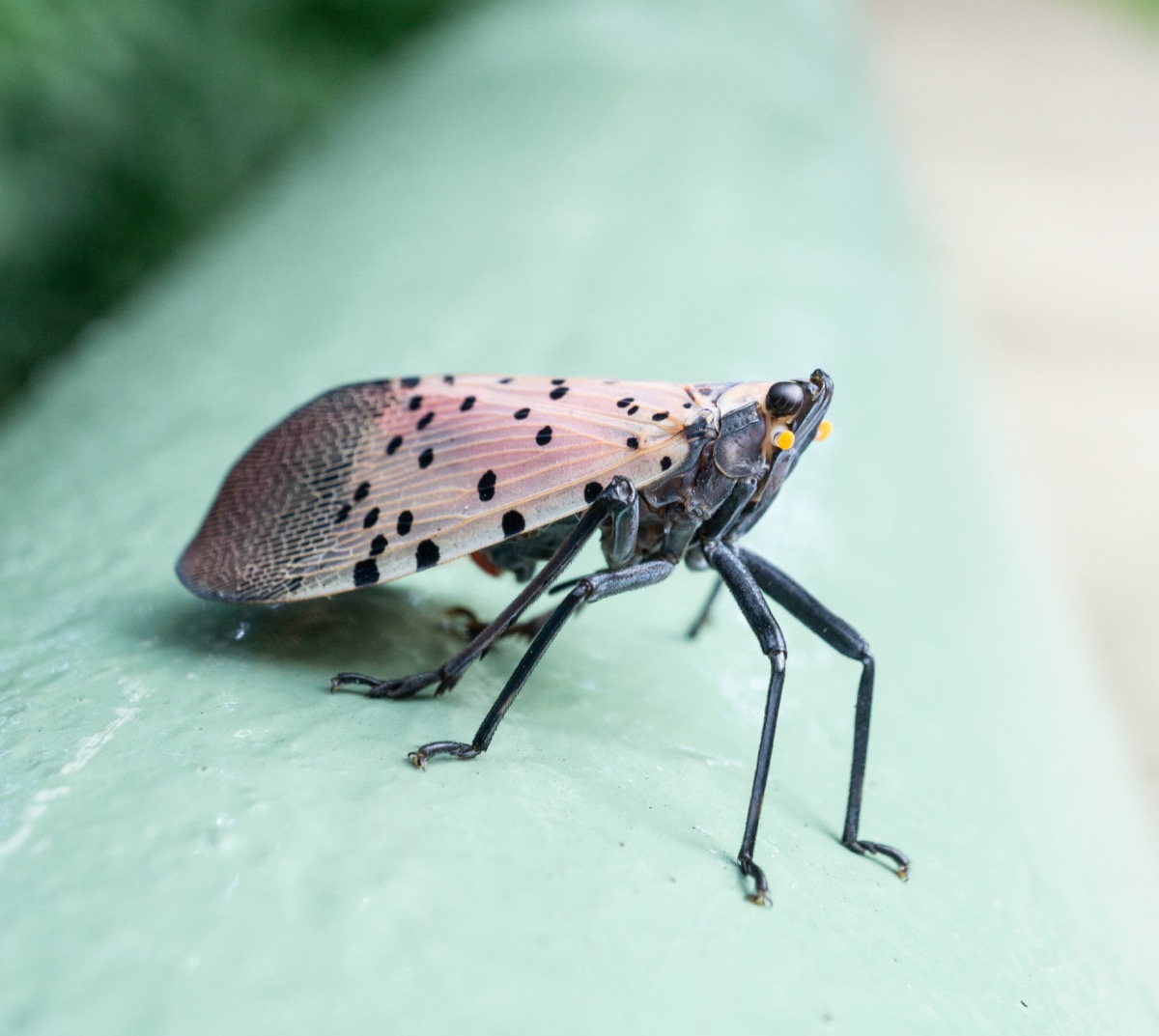If You See This Bug, “Stomp It” Immediately, Officials Urge

One of the great joys of summertime is being able to spend more time outdoors enjoying nature. And with warm weather in full swing, the wild creatures we share a habitat with are also taking advantage of the season. Naturally, the best way to be a good neighbor is to let animals and insects be as they make their way around your garden or yard. But now, officials in some states are warning that if you see one type of bug, you need to “stomp it” immediately. Read on to find out why you may need to play exterminator this season.
READ THIS NEXT: If You See This Scary Bug in Your Home, Don’t Kill It, Experts Warn.
Invasive species can spread quickly due to a lack of natural predators.

Ecosystems work because of the delicate balance of the organisms that live in them. But when a non-native species enters the equation, it can have disastrous consequences for plants and wildlife in the areas they invade.
Recently, authorities warned that invasive hammerhead worms are spreading across southern states in the U.S., including Georgia and Louisiana. Without any natural predators, the bugs feed on beneficial night-crawlers and secrete a toxin through their skin that can cause skin irritation if they’re touched, the Shreveport Times reported. And officials have also raised the alarm about the emerald ash borer, an invasive beetle that’s a “destructive wood-boring” invasive species, according to the U.S. Department of Agriculture (USDA) Animal and Plant Health Inspection Service (APHIS). The bug has been responsible for killing millions of ash trees—which have no natural defense against the beetle—after it hitched a ride from Asia on cargo shipments around 2002.
Now, local officials are asking for help in stopping the spread of another invasive species.
Officials are asking the public to “stomp” this bug if they see it in the wild.

Usually, any bug that’s not a pesky mosquito or unwelcome cockroach should get a pass on getting squashed. However, the New York State Department of Agriculture is urging residents to take action against the invasive spotted lanternfly wherever it’s spotted by killing it right away, local affiliate WABC reports.
The Empire State isn’t alone in turning the public at large into vigilante exterminators. In neighboring New Jersey, the state’s Department of Agriculture has launched an official campaign asking residents to “Join the battle, Beat the Bug, Stomp it Out, Stop the Spotted Lanternfly.”
“We know it’s an invasive insect,” Ruffian Tittmann, a member of the Friends of the Wissahickon preservation non-profit, told WABC. “It has very few predators in this area. We should get out there and try to eradicate it or bring that population way down, so that we don’t have some sort of mass fallout event with our habitat.”
For more pest alerts sent right to your inbox, sign up for our daily newsletter.
The invasive species can decimate trees and crops in the areas they enter.

The spotted lanternfly has been a growing problem since the species was first spotted in 2011 after arriving in the U.S. from its native Asia on a shipment of stones, according to The New York Times. Since then, the pests have spread across the region, with infestations reported in 12 states. Officials’ concern stems from the species’ insatiable appetite for certain types of trees and crops, including apples, cherries, grapes, hops, oak trees, peaches, pine trees, plums, sycamore trees, and more, according to APHIS.
“While it does not harm humans or animals, it can reduce the quality of life for people living in heavily infested areas,” the New Jersey Department of Agriculture said in a statement. “SLF [spotted lanternfly] is a serious invasive pest with a healthy appetite for our plants, and it can be a significant nuisance.”
Others have complained the bugs have become too many to manage. “They swim in our pool. We’ve seen multiple sometimes four, five, six at a time can be just swimming in our swimming pool,” Laurie Jaffe, a tenant in a New Jersey building recently swarmed by the pests, told WABC.
“It is horrendous. They’re on the walls, they’re falling on you while you’re trying to clean,” another tenant told the station.
Some experts worry it will take much more than the public squashing bugs to stop the pests.

Still, some experts point out that asking the public to take on the task of eradicating the invasive species may not be sufficient to stop them, similar to other environmental initiatives such as fighting climate change. “The sole reliance on individuals is not going to get us there,” Marielle Anzelone, an urban ecologist in New York City, told The Times.
“But maybe individual action is a way of pulling people in,” she said. “It’s not so much about that individual person’s carbon footprint or those three lanternflies they kill in a summer. It’s about educating and engaging and perhaps turning them into the person who calls their council member to ask for more funding for the parks department, or votes for local and national candidates to take real action on climate.”
Anzelone also says that there’s no reason not to take more immediate action when possible, admitting she recently noticed a spotted lanternfly on the sidewalk before she took a picture and summarily squashed it. “I did my own little part,” she told The Times.